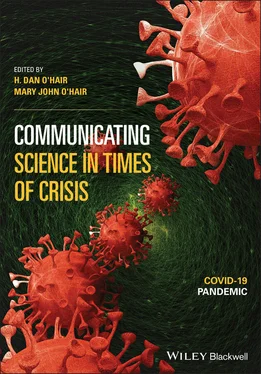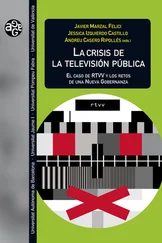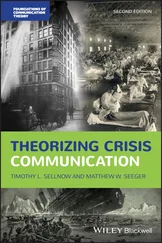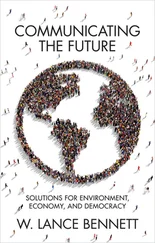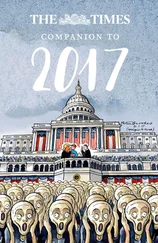77 Manning-Schaffel, V. (2020, April 23). How to not be a “coronavirus jerk” during the pandemic. TODAY.Com. https://www.today.com/health/how-not-be-jerk-during-coronavirus-pandemic-t179698
78 Massey, Z. B., & Johnson, A. J. (2018, November). Attachment styles and terrorism news: A pilot of terror management stimulus and attachment style. Presented at the Annual Conference of the National Communication Association, Salt Lake City, UT.
79 McGregor, H. A., Lieberman, J. D., Greenberg, J., Solomon, S., Arndt, J., Simon, L., & Pyszczynski, T. (1998). Terror management and aggression: Evidence that mortality salience motivates aggression against worldview-threatening others. Journal of Personality and Social Psychology, 74(3), 590–605. https://doi.org/10.1037/0022-3514.74.3.590
80 Menzies, R. E., & Menzies, R. G. (2020). Death anxiety in the time of COVID-19: Theoretical explanations and clinical implications. The Cognitive Behaviour Therapist, 13, E19. https://doi.org/10.1017/S1754470X20000215
81 Menzies, R. G. (2012). The dread of death and its role in psychopathology. Keynote Address Presented at the 35th National Conference of the Australian Association for Cognitive and Behaviour Therapy, Queensland, October 2012.
82 Mikulincer, M. (2019). An attachment perspective on managing death concerns. In C. Routledge & M. Vess (Eds.), Handbook of terror management theory (pp. 243–257). Elsevier.
83 Mikulincer, M., & Florian, V. (1998). The relationship between adult attachment styles and emotional and cognitive reactions to stressful events. In J. A. Simpson & W. S. Rholes (Eds.), Attachment theory and close relationships (pp. 143–165). The Guilford Press.
84 Mikulincer, M., & Florian, V. (2000). Exploring individual differences in reactions to mortality salience: Does attachment style regulate terror management mechanisms? Journal of Personality and Social Psychology, 79(2), 260–273. https://doi.org/10.1037/0022-3514.79.2.260
85 Mikulincer, M., Florian, V., & Tolmacz, R. (1990). Attachment styles and fear of personal death: A case study of affect regulation. Journal of Personality and Social Psychology, 58(2), 273–280. https://doi.org/10.1037/0022-3514.58.2.273
86 Mikulincer, M., Florian, V., & Weller, A. (1993). Attachment styles, coping strategies, and posttraumatic psychological distress: The impact of the Gulf War in Israel. Journal of Personality and Social Psychology, 64(5), 817–826.
87 Miller, C. H., Ivanov, B, Compton, J., Averbeck, J., Robertson, K.J., Sims, J.D., Parker, K. A., & Parker, J.L. (2013). Boosting the potency of resistance: Combining the motivational forces of inoculation and psychological reactance. Human Communication Research, 39(1), 127–155. https://doi.org/10.1111/j.1468-2958.2012.01438.x
88 Miller, C. H., & Massey, Z. B. (2019). Meaning-making, communication, and terror management processes. In C. Routledge & M. Vess (Eds.), Handbook of terror management theory (pp. 577–611). Elsevier.
89 Miller, C. H., & Massey, Z. B. (2020). Terror management theory perspectives on applied communication research. In H. D. O’Hair & M. J. O’Hair (Eds.), The handbook of applied communication research (pp. 417–442). John Wiley & Sons, Ltd.
90 Moscardino, U., Scrimin, S., Capello, F., & Altoè, G. (2010). Social support, sense of community, collectivistic values, and depressive symptoms in adolescent survivors of the 2004 Beslan terrorist attack. Social Science & Medicine, 70(1), 27–34. https://doi.org/10.1016/j.socscimed.2009.09.035
91 Mossakowski, K. N., & Zhang, W. (2014). Does social support buffer the stress of discrimination and reduce psychological distress among Asian Americans? Social Psychology Quarterly, 77(3), 273–295. https://doi.org/10.1177/0190272514534271
92 Pazzanese, C. (2020, May 8). Battling the ‘pandemic of misinformation’: Ubiquity of social media has made it easier to spread or even create COVID-19 falsehoods, making the work of public health officials harder. The Harvard Gazette. https://news.harvard.edu/gazette/story/2020/05/social-media-used-to-spread-create-covid-19-falsehoods
93 Perach, R., & Wisman, A. (2019). Can creativity beat death? A review and evidence on the existential anxiety buffering functions of creative achievement. The Journal of Creative Behavior, 53(2), 193–210. https://doi.org/10.1002/jocb.171
94 Picheta, R. (2020, July 20). London face mask protests: Hundreds of people, some wearing masks, protested against mask-wearing. CNN. https://www.cnn.com/2020/07/20/uk/london-face-mask-protest-gbr-intl/index.html
95 Pow, J., King, D. B., Stephenson, E., & DeLongis, A. (2017). Does social support buffer the effects of occupational stress on sleep quality among paramedics? A daily diary study. Journal of Occupational Health Psychology, 22(1), 71–85. https://doi.org/10.1037/a0040107
96 Pyszczynski, T., Greenberg, J., & Solomon, S. (1999). A dual-process model of defense against conscious and unconscious death-related thoughts: An extension of terror management theory. Psychological Review, 106(4), 835–845. https://doi.org/10.1037/0033-295X.106.4.835
97 Pyszczynski, T., Solomon, S., & Greenberg, J. (2015). Thirty years of terror management theory: From genesis to revelation. In J. M. Olson, & M. P. Zanna (Eds.), Advances in experimental social psychology (Vol. 52, pp. 1–70). Elsevier. https://doi.org/10.1016/bs.aesp.2015.03.001
98 Reiss, S., & Jonas, E. (2019). The cycle of intergroup conflict: Terror management in the face of terrorism and war. In C. Routledge & M. Vess (Eds.), Handbook of terror management theory (pp. 449–484). Academic Press. https://doi.org/10.1016/B978-0-12-811844-3.00019-6
99 Reynolds, E. (2020, August 15). Vaccines are safe. But huge numbers of people around the world say they wouldn’t take a Covid jab. CNN. https://www.cnn.com/2020/08/15/health/vaccine-hesitancy-coronavirus-safety-intl/index.html
100 RNZ. (2020, April 19). Protesters in Texas ignore social distancing, oppose lockdown. RNZ. https://www.rnz.co.nz/news/world/414584/protesters-in-texas-ignore-social-distancing-oppose-lockdown
101 Rogers, R., Sanders, S., & Vess, M. (2019). The terror management of meaning and growth: How mortality salience affects growth-oriented processes and the meaningfulness of life. In C. Routledge & M. Vess (Eds.), Handbook of terror management theory (pp. 325–345). Elsevier.
102 Rothschild, L., Lifshin, U., Helm, P. J., & Greenberg, J. (2019). The curse and the blessing: The self as source of the terror and the primary avenue for managing it. In C. Routledge & M. Vess (Eds.), Handbook of terror management theory (pp. 179–207). Academic Press. https://doi.org/10.1016/B978-0-12-811844-3.00007-X
103 Routledge, C., Arndt, J., & Sheldon, K. M. (2004). Task engagement after mortality salience: The effects of creativity, conformity, and connectedness on worldview defense. European Journal of Social Psychology, 34(4), 477–487. https://doi.org/10.1002/ejsp.209
104 Routledge, C., Ostafin, B., Juhl, J., Sedikides, C., Cathey, C., & Liao, J. (2010). Adjusting to death: The effects of mortality salience and self-esteem on psychological well-being, growth motivation, and maladaptive behavior. Journal of Personality and Social Psychology, 99(6), 897–916. https://doi.org/10.1037/a0021431
105 Schimel, J., Hayes, J., & Sharp, M. (2019). A consideration of three critical hypotheses. In C. Routledge & M. Vess (Eds.), Handbook of terror management theory (pp. 1–30). Elsevier. https://doi.org/10.1016/B978-0-12-811844-3.00001-9
106 Schimel, J., Simon, L., Greenberg, J., Pyszczynski, T., Solomon, S., Waxmonsky, J., & Arndt, J. (1999). Stereotypes and terror management: Evidence that mortality salience enhances stereotypic thinking and preferences. Journal of Personality and Social Psychology, 77(5), 905–926. https://doi.org/10.1037/0022-3514.77.5.905
Читать дальше
